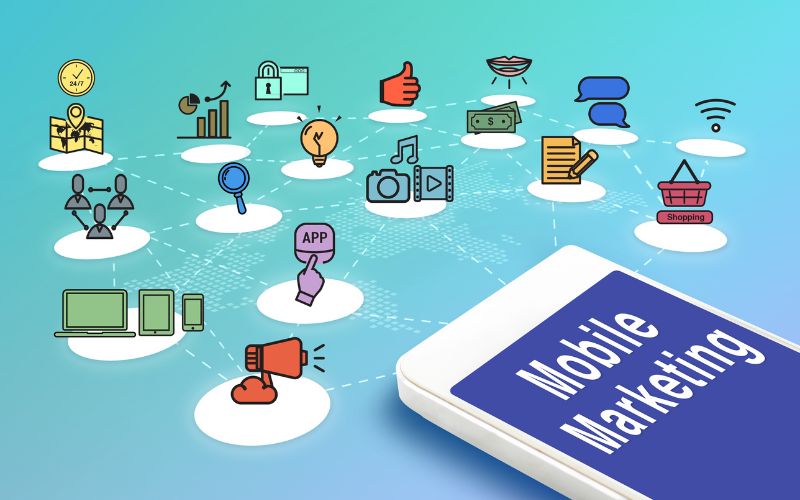Mobile Marketing: Reaching Customers on the Go

In today’s fast-paced, digitally connected world, mobile marketing has become a crucial strategy for businesses aiming to reach customers on the go. With the majority of consumers using smartphones for everything from browsing the internet to shopping online, mobile marketing provides a unique opportunity to engage with customers in real-time, no matter where they are. Here’s a comprehensive look at how to effectively reach and engage your audience through mobile marketing.
1. Optimize for Mobile Devices
The foundation of successful mobile marketing is ensuring that your digital assets are optimized for mobile devices. This includes having a responsive website design that adjusts seamlessly to different screen sizes and resolutions. Fast loading times are crucial, as mobile users expect quick and smooth experiences. Ensure that your site is easy to navigate on a smaller screen and that all buttons and links are easily clickable.
2. Leverage Mobile Apps
Mobile apps provide a direct and personalized way to engage with your customers. Investing in a well-designed app can enhance customer loyalty and provide a platform for delivering exclusive content, offers, and services. Apps can also utilize push notifications to remind users of new products, special promotions, or updates, driving higher engagement and conversions.
3. Utilize SMS and MMS Marketing
SMS and MMS marketing are powerful tools for reaching customers instantly. SMS marketing involves sending text messages to your customers’ mobile devices, while MMS allows for the inclusion of multimedia elements such as images, videos, and GIFs. These messages can be used to deliver time-sensitive offers, alerts, reminders, and personalized messages. Ensure that your messages are concise, clear, and include a strong call-to-action.
4. Embrace Location-Based Marketing
Location-based marketing leverages the GPS capabilities of mobile devices to target users based on their geographic location. Techniques such as geofencing and beacon technology allow you to send personalized messages, offers, and advertisements to customers when they are near your store or a specific location. This type of marketing is highly effective for driving foot traffic and local engagement.
5. Engage on Social Media
Social media platforms are predominantly accessed via mobile devices, making them ideal for mobile marketing efforts. Create mobile-friendly content tailored to each platform, such as vertical videos for Instagram Stories, short tweets for Twitter, and visually appealing posts for Facebook. Utilize social media advertising to target specific demographics and interests, ensuring your message reaches the right audience.
6. Implement Mobile Search Advertising
Mobile search advertising involves placing ads on search engines like Google that appear when users search for relevant keywords on their mobile devices. Use mobile-specific ad formats and extensions to enhance the visibility and effectiveness of your ads. Ensure your landing pages are mobile-optimized to provide a seamless experience from the ad click to the conversion.
7. Create Engaging Mobile Content
Content that resonates well on mobile devices is typically short, visually appealing, and easy to consume on the go. Use videos, infographics, and images to capture attention quickly. Consider creating content specifically for mobile consumption, such as snackable videos, short articles, and interactive content like polls and quizzes.
8. Utilize Mobile Wallets and Payment Systems
Mobile wallets and payment systems, such as Apple Pay and Google Wallet, streamline the purchasing process for mobile users. Integrating these payment options into your mobile app or website can enhance the user experience and encourage more conversions. Additionally, mobile wallets can be used for loyalty programs, digital coupons, and special offers, providing added value to your customers.
9. Leverage In-App Advertising
In-app advertising involves placing ads within mobile apps that your target audience uses frequently. These can include banner ads, interstitial ads, video ads, and native ads. Choose apps that align with your brand and audience interests to ensure higher relevance and engagement. In-app ads can be highly targeted, providing a personalized marketing experience.
10. Monitor and Analyze Mobile Metrics
Regularly monitoring and analyzing mobile marketing metrics is essential for optimizing your strategy. Use tools like Google Analytics to track mobile traffic, user behavior, conversion rates, and other key performance indicators. Pay attention to metrics such as bounce rates, average session duration, and click-through rates to identify areas for improvement and adjust your campaigns accordingly.
Conclusion
Mobile marketing offers businesses a dynamic and powerful way to connect with customers wherever they are. By optimizing your digital assets for mobile, leveraging mobile apps, utilizing SMS and MMS marketing, and embracing location-based strategies, you can effectively reach and engage your audience on the go. Social media, mobile search advertising, engaging mobile content, and seamless payment options further enhance your mobile marketing efforts.
Continuous monitoring and analysis of mobile metrics ensure that your strategy remains effective and responsive to changing consumer behaviors. By embracing these mobile marketing strategies, you can maximize your reach, drive higher engagement, and ultimately boost your business’s success in the mobile-driven digital landscape.
